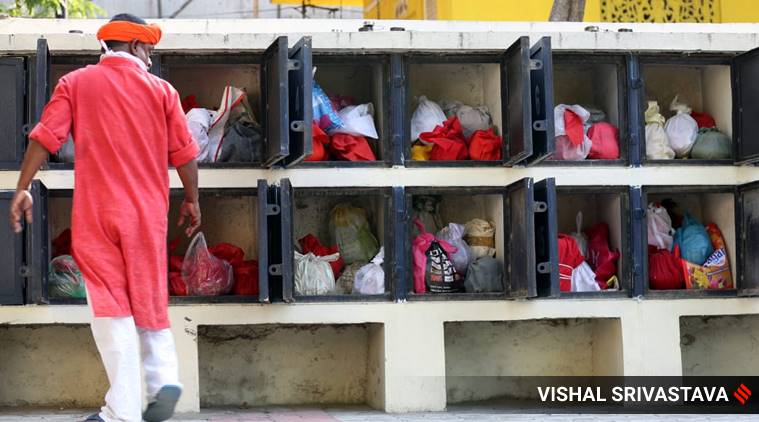
Both state governments underlined that the local administration would take the final call on easing curbs.
Story continues below this ad
Announcing his government’s decision in a televised address, Punjab Chief Minister Amarinder Singh said: “The decision on further course of action will be taken after two weeks, depending on the situation. The only solution is social distancing. If it is under control after two weeks, we will take a call.”
Fact check: Revisiting virus curve, to read lockdown effect
Singh asked people to maintain discipline and underlined that if they step out, they must wear masks, ensure social distancing and return to their homes by 11 am. “If we have given relaxation, that does not mean you can call your friends home. Social distancing has to be ensured,” he said.
Punjab has reported 377 COVID-19 cases and 19 deaths so far. While four districts — Patiala, Jalandhar, Ludhiana and Mohali — have been declared hotspots, the containment zones are: Jawaharpur in Mohali, Pathlawa village in Nawanshahar, Sujanpur in Pathankot, New Jain Market in Rajpura and Kacha Patiala, Safabadi Gate in Patiala.
Earlier this week, the Punjab government had set up an expert committee to formulate a lockdown exit strategy.
Story continues below this ad
Issuing guidelines for resuming economic activity in non-containment zones, the state government said standalone shops, neighbourhood shops and shops in residential areas will be allowed to open on rotation, from 7 am to 11 am. However, shops in market complexes and shopping malls as well as barber shops will remain closed.
All shops in rural areas registered under the Shops & Establishment Act, except those in multi-brand and single-brand malls, will also be allowed to open with 50 per cent staff strength, for four hours daily.
READ | West Bengal: Brace for surge of patients, hospitals told
The government has permitted all construction activities in rural areas. In urban areas, work on ongoing projects will be allowed, subject to availability of workers.
Story continues below this ad
In line with the Union Ministry of Home Affairs’ guidelines, the state has also permitted industries in Special Economic Zones (SEZs), Export Oriented Units (EOUs), industrial estates, industrial townships and rural areas to operate. However, the management must arrange transport for workers, medical insurance, tie-up with hospitals, disinfection of the premises, thermal screening of employees etc. The workers will also be allowed to move on cycles or on foot.
 At the cremation ground in Lucknow.
At the cremation ground in Lucknow.
In Kolkata, Chief Minister Mamata Banerjee announced that standalone shops, including for electronics, books, paint, laundry, hardware, cellphone recharge and paan shops, will be allowed to open in non-containment zones from May 4.
“We will only allow standalone shops. No hawkers’ corner, market or shopping complex will be allowed to open,” she said. “We thought we would take a decision after getting clarity from the central government. But we did not get any clarification. So, we announced our decision today. We have taken some decisions, which will be implemented from Monday,” she said.
She said taxis, with not more than three passengers, and private buses, with not more than 20 passengers, will be allowed to ply in green zones, within the district.
Story continues below this ad
Some industries, including iron and steel, will be allowed to start production in green zones. But salons, spas, tailoring shops, liquor shops, tea stalls will not be allowed.
“Nobody can say when this crisis will end. Most of the countries have already announced lockdown till the end of May and first week of June. Our experts and doctors believe that the restrictions should continue till the end of May,” she said.
The graph of positive cases may go down after that, but it may again show an upward trend during the rainy season in July and August, she said.
Chief Secretary Rajiva Sinha said the government will issue an official notification, on the easing of curbs, on May 1.

 Punjab has reported 377 COVID-19 cases and 19 deaths so far.
Punjab has reported 377 COVID-19 cases and 19 deaths so far.
 At the cremation ground in Lucknow.
At the cremation ground in Lucknow.





